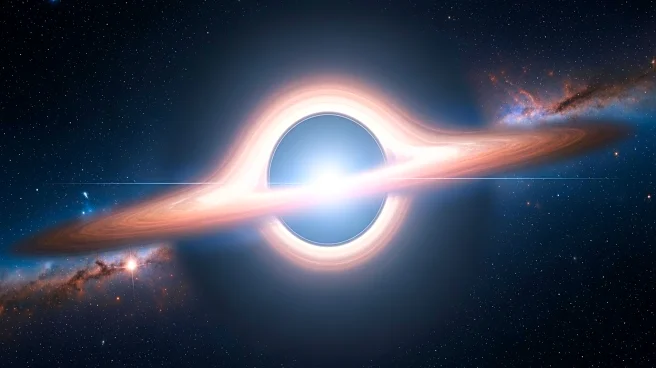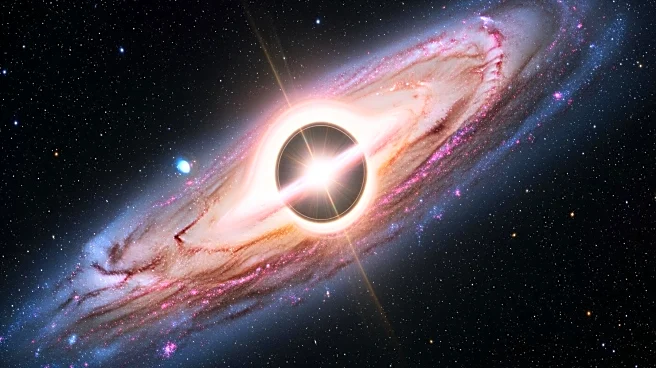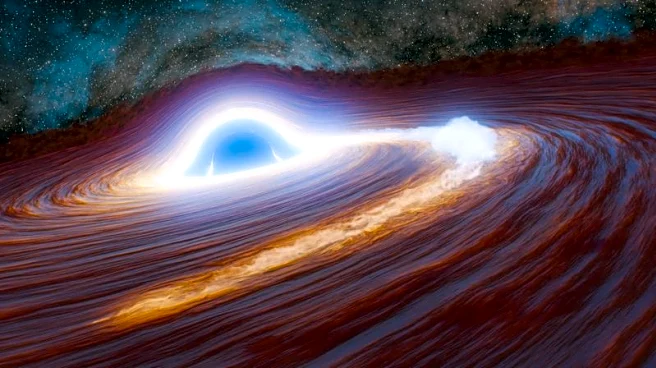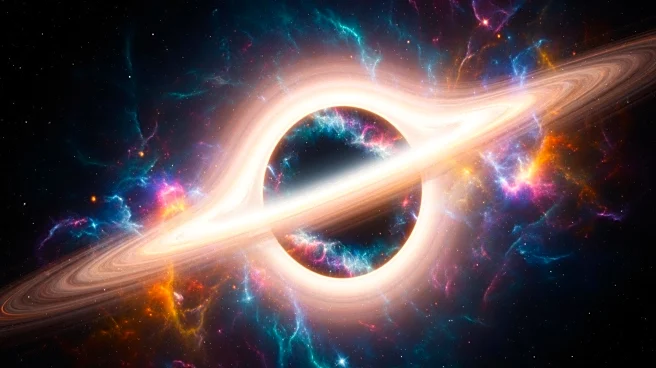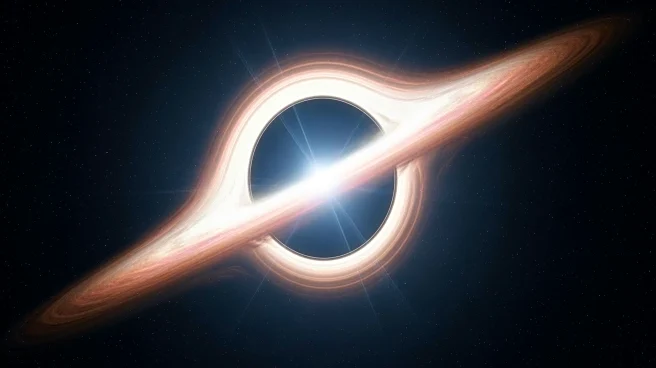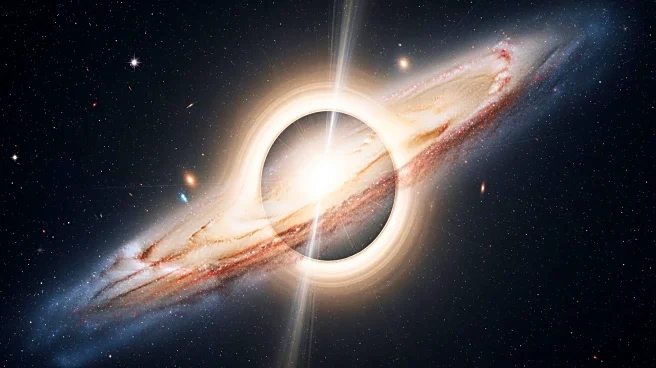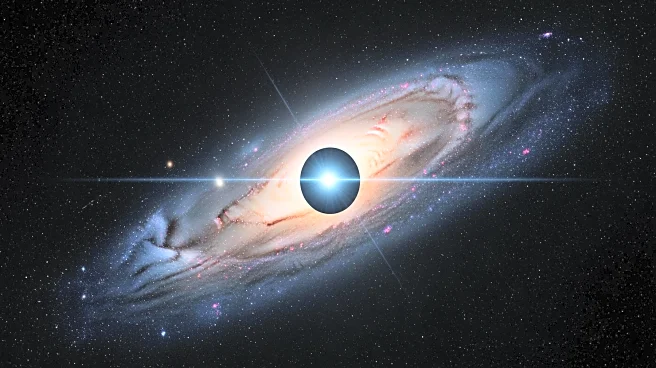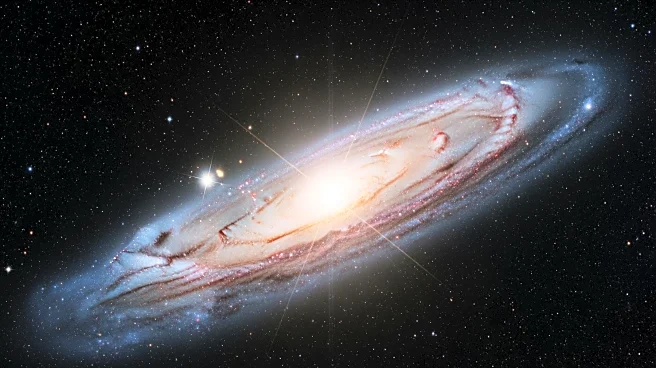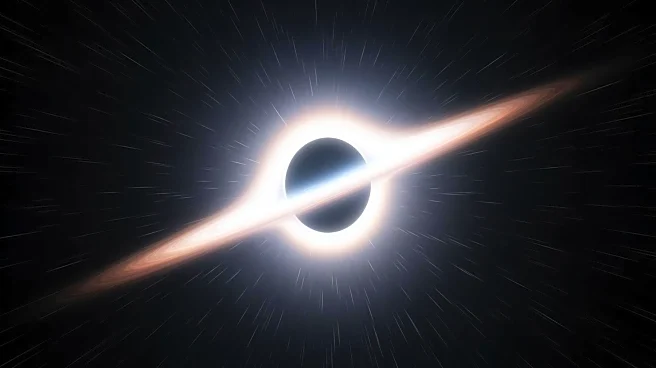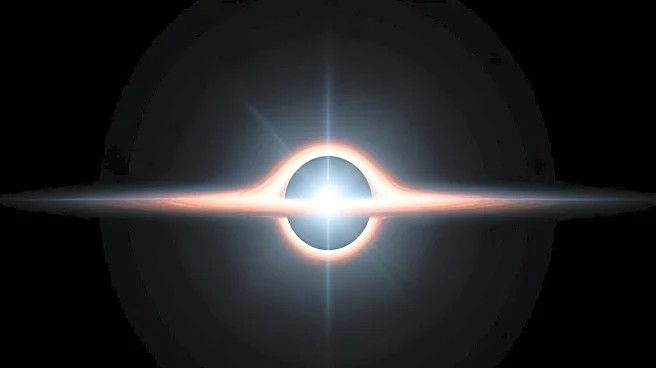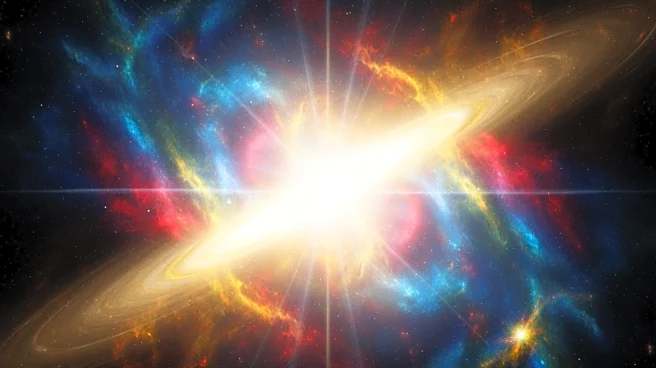What's Happening?
Astronomers have detected the brightest black hole flare ever observed, emitting as much light as 10 trillion Suns. This flare, a tidal disruption event, occurred when a supermassive black hole shredded
and swallowed a giant star. The responsible black hole, located in a galaxy approximately 10-11 billion light-years away, was discovered in 2018 by Caltech's Zwicky Transient Facility survey. The flare took months to reach peak brightness and is now slowly fading. Research led by Matthew Graham from Caltech describes it as a 'one-in-a-million' event in terms of energy and duration.
Why It's Important?
This unprecedented cosmic flare challenges existing models of black hole physics and provides a rare opportunity to study the interaction of supermassive black holes with their environments in the early universe. The event offers insights into how the first massive black holes grew and influenced their galaxies shortly after the Big Bang. The discovery also highlights the potential for future observatories to uncover more such rare events, contributing to our understanding of the universe's evolution.
What's Next?
Scientists will continue to monitor the flare as it fades, with future observations potentially revealing new details about the event. Upcoming missions and observatories, such as the Vera C. Rubin Observatory, are expected to uncover more rare flares, enhancing our understanding of black hole physics and the early universe.
